Composer Pyotr Ilyich Tchaikovsky had complicated relationships with women.
On one hand, for many years, his career was financed by a single wealthy woman, who he poured his heart out to in letters. On the other hand, his gayness meant that his romantic relationships with women were doomed, something he only came to grips with after his ill-advised marriage in 1878.

Pyotr Il’ych Tchaikovsky
Today, we’re looking at five women who played prominent roles in Tchaikovsky’s life.
Aleksandra Tchaikovskaya
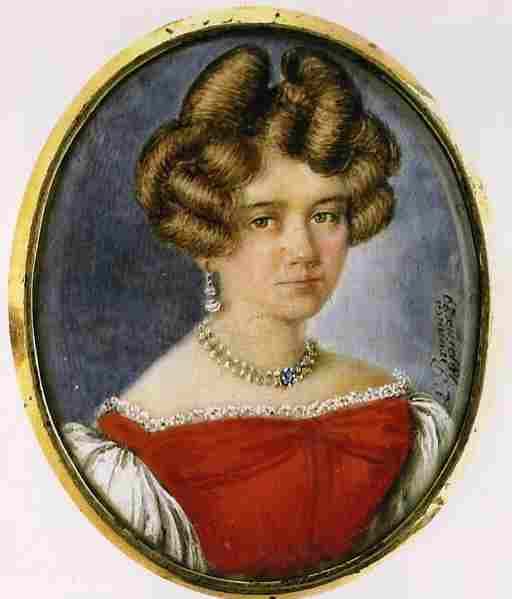
Aleksandra Tchaikovskaya
Aleksandra Assier Tchaikovskaya was born in the summer of 1812 in St. Petersburg. In October 1833, she married Ilya Tchaikovsky, a mining engineer almost twice her age.
Their first daughter died when just a baby. However, between 1838 and 1850, Aleksandra had six more children.
Her third child was Pyotr Ilyich, born in 1840, and her final two children in 1850 were a set of twins. The younger of those twins was a boy named Modest, who would later become Pyotr’s confidant, biographer, and champion.
Lang Lang – Tchaikovsky: Children’s Album, Op. 39, TH 141 – No. 21, Sweet Dreams
Tragically, Aleksandra died in 1854 of cholera. She was only forty-two years old, and her children were between the ages of four and sixteen.
Their father Ilya was unable to keep working and care for his young children, and he hired nannies to help take care of them.
Initially, Pyotr and Modest’s older sister, also named Aleksandra, helped out with childcare and nurturing. However, she got married in 1861 and left her childhood household to begin her own.
Twenty-one-year-old Pyotr stepped up. In Modest’s words, after their sister’s marriage, Pyotr became “brother, mother, friend, mentor, and everything else in the world.”
Learn more about Tchaikovsky’s childhood.
Antonina Tchaikovskaya
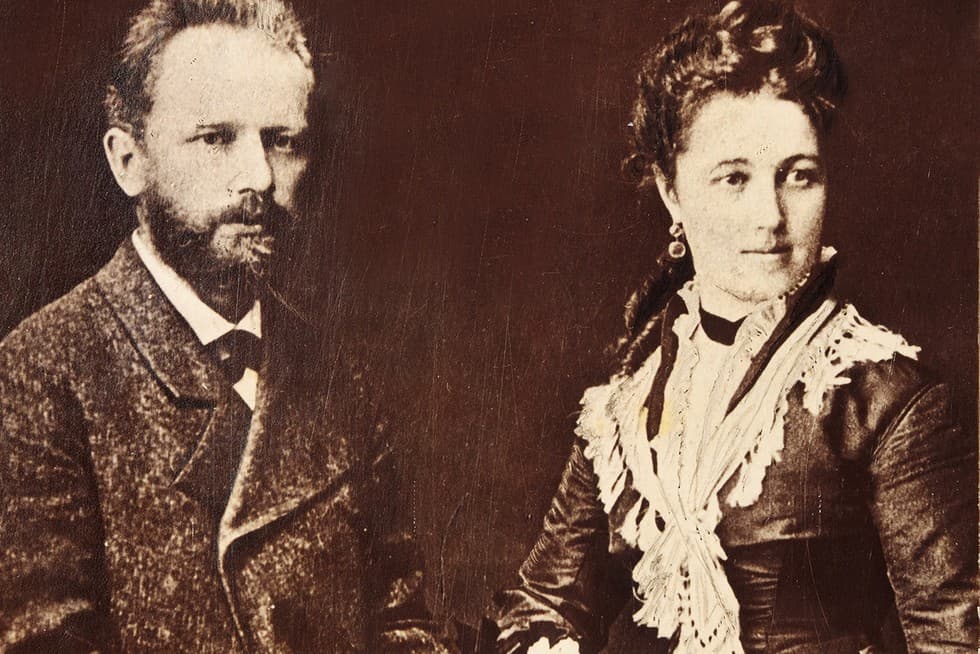
Tchaikovsky and his wife Antonina Miliukova
Antonina was born in 1848 to an impoverished noble family outside of Moscow. She was a musical child, and her father oversaw an orchestra of serfs that provided music.
At an 1872 house party, she met a friend of her sister-in-law’s: a composer and music professor by the name of Pyotr Ilyich Tchaikovsky. In 1877, she began a correspondence with him.
She had recently inherited money that she knew could be used as a dowry, and she found Tchaikovsky very attractive. Meanwhile, Tchaikovsky was increasingly interested in marrying a woman, both to have a more settled home life and to blunt rumours about his homosexuality. They married in the summer of 1877 after meeting only a few times.
Antonina was in love with her husband, but, to her frustration, he refused to consummate the marriage. His anxiety flared, and he quickly recognised that he’d made a terrible mistake. He fled Russia for a while to sort out his feelings, leaving her behind in St. Petersburg.
During this self-imposed exile, he wrote a string of masterpieces in quick succession, including his violin concerto. (It’s perhaps no coincidence that it was written for one of his students, a dashing violinist named Iosif Kotek, who he had once been in love with and who had served as one of the witnesses at his wedding.)
Augustin Hadelich plays Tchaikovsky concerto with Dallas Symphony and Gemma New
By 1880, Antonina realised that her husband was not going to return to her, and she moved in with a lawyer who had become her lover.
She had three children with him, but because Tchaikovsky’s name was on the marriage certificate, these children were legally considered to be his. She gave them up at a foundling hospital, both to protect her fragile health and to keep rumours about her and her husband’s divergent love lives quietly. (For his part, Tchaikovsky was disgusted that his wife did not raise her children.)
After the death of her lawyer lover in 1888 and Tchaikovsky’s death in 1893, her mental health began to deteriorate. By 1896, she moved to an asylum. She would never be healthy enough to live on her own again, and she died in 1917.
Learn more about Tchaikovsky’s marriage.
Nadezhda von Meck
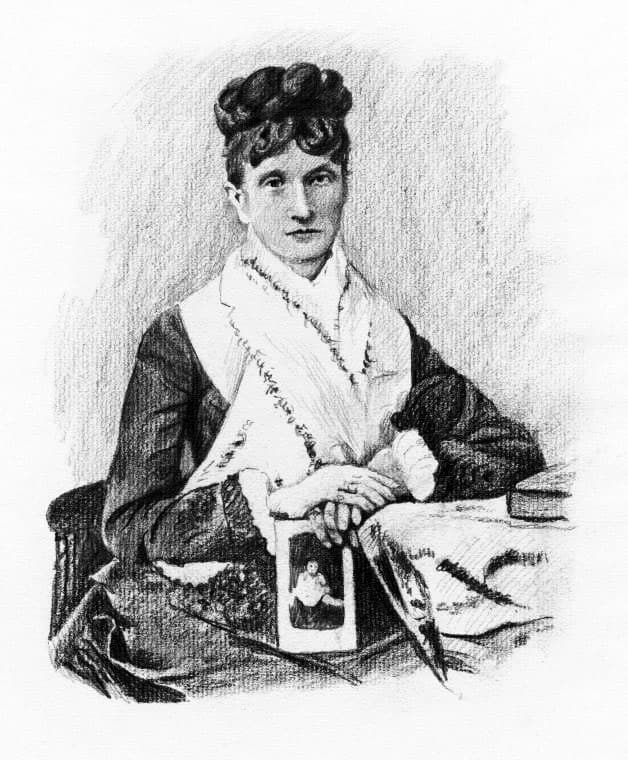
Nadezhda von Meck
Nadezhda von Meck was a fascinating and strong-willed woman whose immense wealth and business savvy allowed her to bankroll some of Tchaikovsky’s best-known works.
She was born in 1831 outside of Smolensk, near the present-day border of Belarus and Russia. A couple of weeks before her seventeenth birthday, she married a poor engineer named Karl von Meck.
Nadezhda soon set to work, raising children (she would have eighteen in all, although only eleven lived) and overseeing her husband’s career. She pushed him to become involved with the railroads, believing that there was good money to be made there, if a man got into the technology early.
She was correct. Karl von Meck ended up becoming one of the most important figures in developing Russia’s far-flung railroad network. Consequently, he became enormously wealthy.
Nadezhda had always loved music, and she took great satisfaction in supporting musicians’ careers. In 1877, violinist Iosif Kotek – Tchaikovsky’s student and one-time love interest – came to visit von Meck and play chamber music with her. She was intrigued by Tchaikovsky’s works and began writing to him.
Both von Meck and Tchaikovsky grew to treasure their correspondence deeply. She bestowed upon him an annual stipend of 6,000 rubles so that he could quit his job teaching and focus on composing as much as possible. Her one condition for the gift was that they should never meet, but rather communicate by letter alone.
This unusual arrangement helped to make possible many of Tchaikovsky’s works of the late 1870s and 1880s: the Fourth Symphony, the Fifth Symphony, The Seasons, Sleeping Beauty, the Serenade for Strings, and many others.
Tchaikovsky: Symphony No. 4 in F minor, Op.36
Their fruitful partnership came to a halt in 1890 when she paid his stipend a year in advance and then announced she’d be ending her support. She had fallen ill, and her many children – perhaps understandably – were bitter about the time, money, and attention that Tchaikovsky had received over the years.
It is possible that the two healed their rift shortly before Tchaikovsky’s sudden death in November 1893, but historians aren’t sure. In any event, Nadezhda died two months after Tchaikovsky of tuberculosis.
Désirée Artôt-Padilla
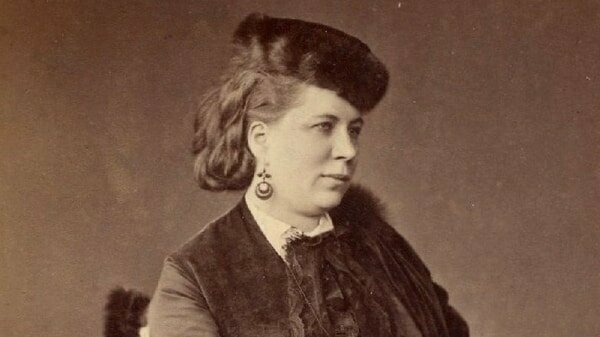
Désirée Artôt
Désirée Artôt was born into a family of professional musicians and artists in Paris in 1835. She grew up to become a hugely accomplished mezzo-soprano who toured all over Europe.
In 1868, she came to perform in Moscow. She made a sensational impression. While there, she struck up a friendship with Tchaikovsky after meeting him at a party. They quickly became great friends, and Tchaikovsky dedicated his Romance in F minor for piano to her.
Tchaikovsky: Romance in F Minor, Op. 5
Within months, the idea of marriage was floated, despite Tchaikovsky’s homosexuality. Ultimately, though, they never got married. A rival for Artôt’s hand told her mother false stories about Tchaikovsky’s background and income, which spooked both women. It is also possible that she heard gossip about Tchaikovsky’s love of men.
The following September, she married another singer: Mariano Padilla y Ramos. When Tchaikovsky was told about the marriage, he was in the middle of a rehearsal, which he promptly cancelled because he was so upset about the news.
However, it didn’t take very long for him to get over the whole affair. One of his most popular works, the first piano concerto, even features a quiet tribute to her: the score quotes a song that Artôt sang called Il faut s’amuser et rire.
They bumped into each other unexpectedly in 1875. Years later, they renewed their friendship, and Tchaikovsky even stayed with her in Berlin once while traveling.
“This evening is counted among the most agreeable recollections of my sojourn in Berlin. The personality and the art of this singer are as irresistibly bewitching as ever,” he wrote in his journal.
Adele aus der Ohe
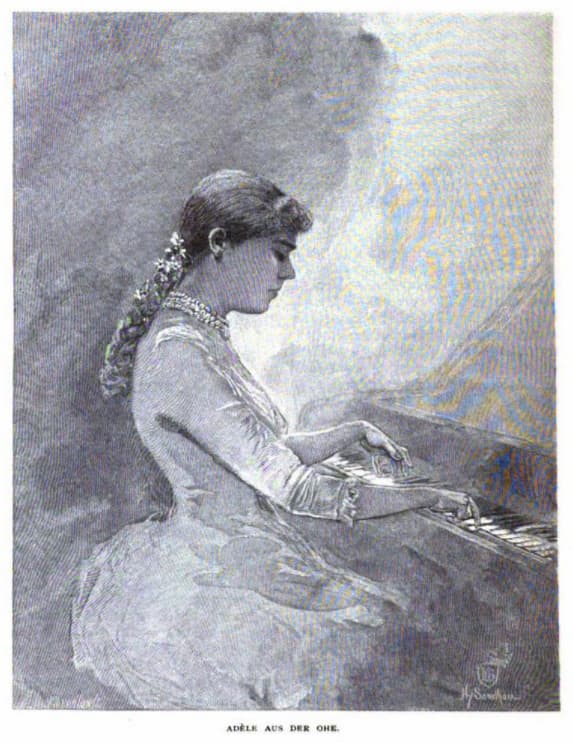
Adele aus der Ohe
Adele aus der Ohe was born in Hanover, Germany, in 1861. She was very musical, and once she started playing piano, there was no stopping her.
In 1873, when she was just twelve, she began studying under Franz Liszt, who would remain her teacher for ten years.
In 1886, she and her older sister sailed to America and embarked on a cross-country adventure. She earned such rave reviews that in 1891, planners invited her to perform at the opening week concerts at Carnegie Hall. On the podium was none other than Tchaikovsky himself.
She played his first piano concerto to thunderous acclaim. Tchaikovsky wrote in his journal:
My concerto went magnificently, thanks to aus der Ohe’s brilliant interpretation. The enthusiasm was far greater than anything I have met with, even in Russia. I was recalled over and over.
He invited Adele to come to Russia so they could repeat their triumph, and in October 1893, they did. She played his concerto in the second half of the concert, while he premiered his sixth symphony in the first half.
The Tuesday after that concert, she went to visit Tchaikovsky and play music for him. The following day, he went out to eat at a restaurant and drank a glass of unboiled water. The unboiled water gave him cholera, and on Monday, he died.
A shaken Adele performed at the concert given in his memory: a piano arrangement of the sixth symphony.
For more of the best in classical music, sign up for our E-Newsletter




